Science
Ms Kirk, Ms Nguyen & Ms Kini

Science
Ms Kirk, Ms Nguyen & Ms Kini
What a wonderful few weeks we have had learning about Physical Science. We are blown away by the amount of scientific words students are using to explain their learning!
We learnt that objects move by pushing, pulling, rolling, sliding, bouncing and spinning. We watched videos, found, discussed and displayed how certain objects move for a particular purpose. For example, we learnt that we pull a rope in a game of ‘tug-of-war’ or that we slide down a slide on the playground. Students were also challenged to explain their learning to peers.
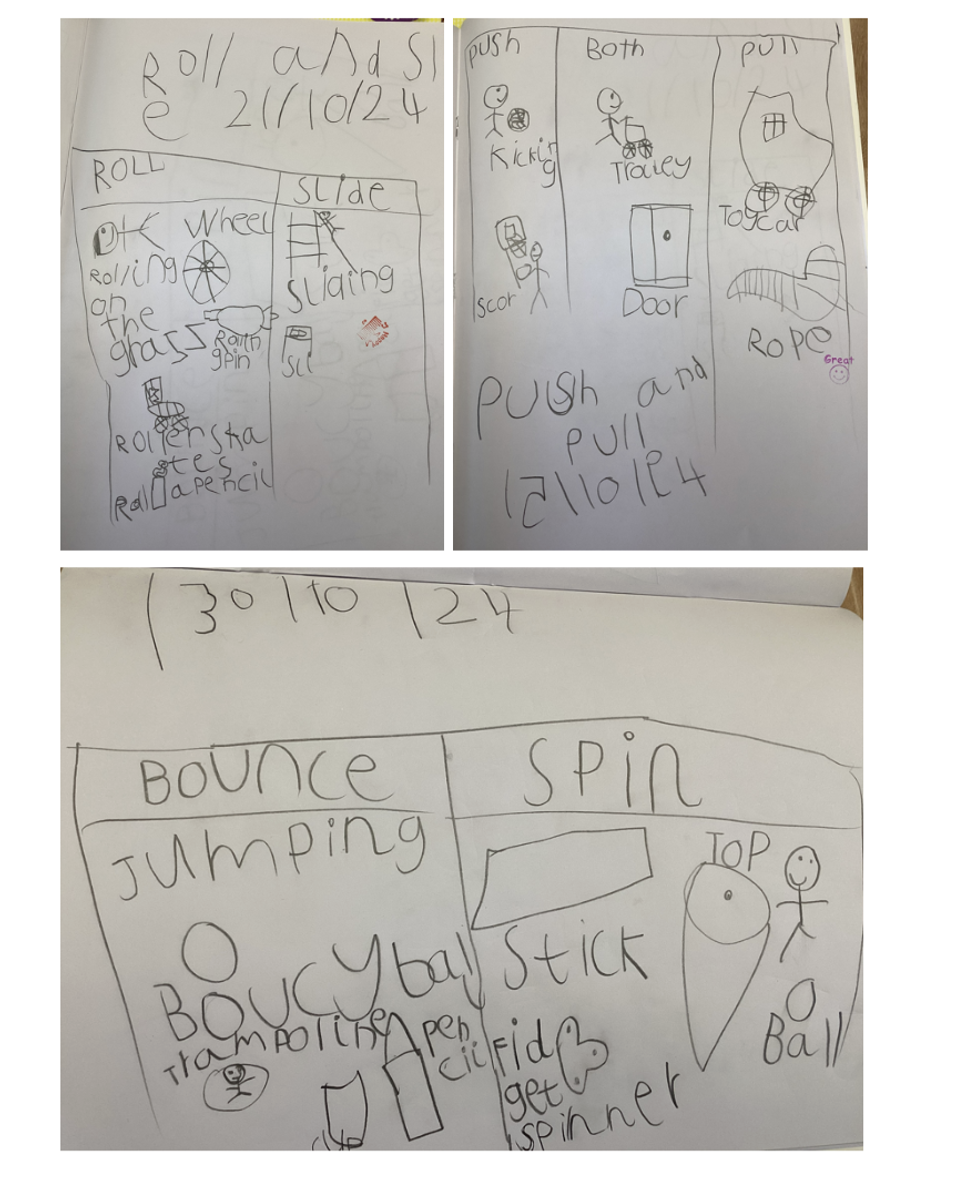

We learnt that objects work well or move in a particular way based on their main surface. We discovered and recorded a range of daily objects in the classroom and in the yard in our Science journals and on Seesaw. We linked Science and Maths to identify an object’s 3D shape and challenged students to explain why a certain object’s shape and surface helps us use it. For example, ‘a water bottle is a cylinder shape and has a curved body so it can fit comfortably in our hand. It also has a flat bottom so it can sit on the table and not fall off.’
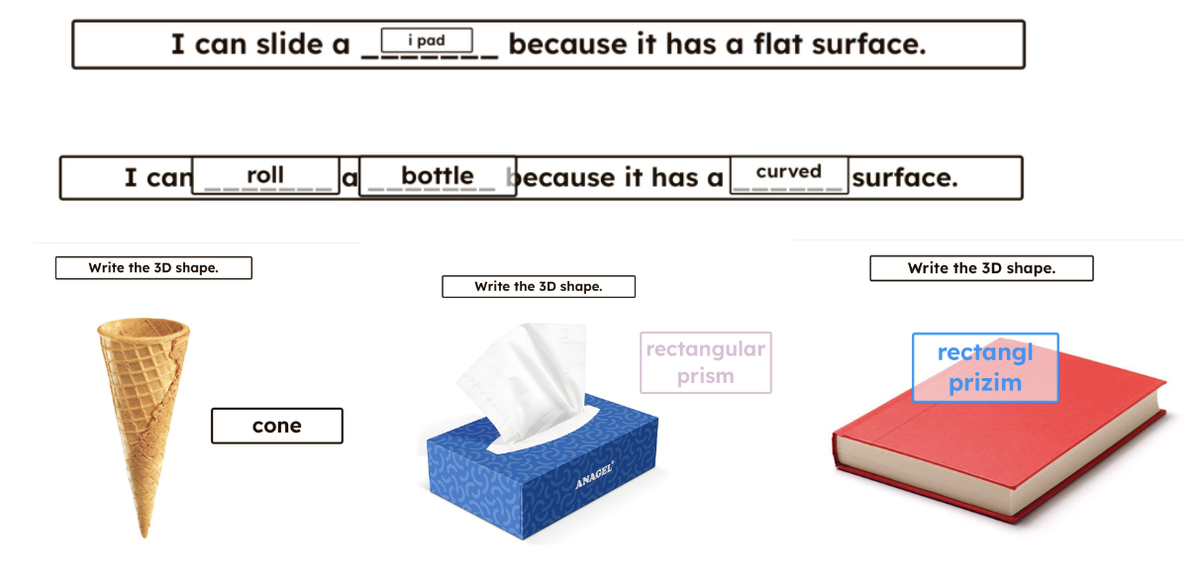

We learnt that light and sound can come from a natural or artificial source. Students were challenged to explore and explain how our eyes and visual cortex at the back of our brain helps us process light to see. Similarly, we explored and explained how our ears and auditory cortex at the centre of our brain helps us process sound to hear.
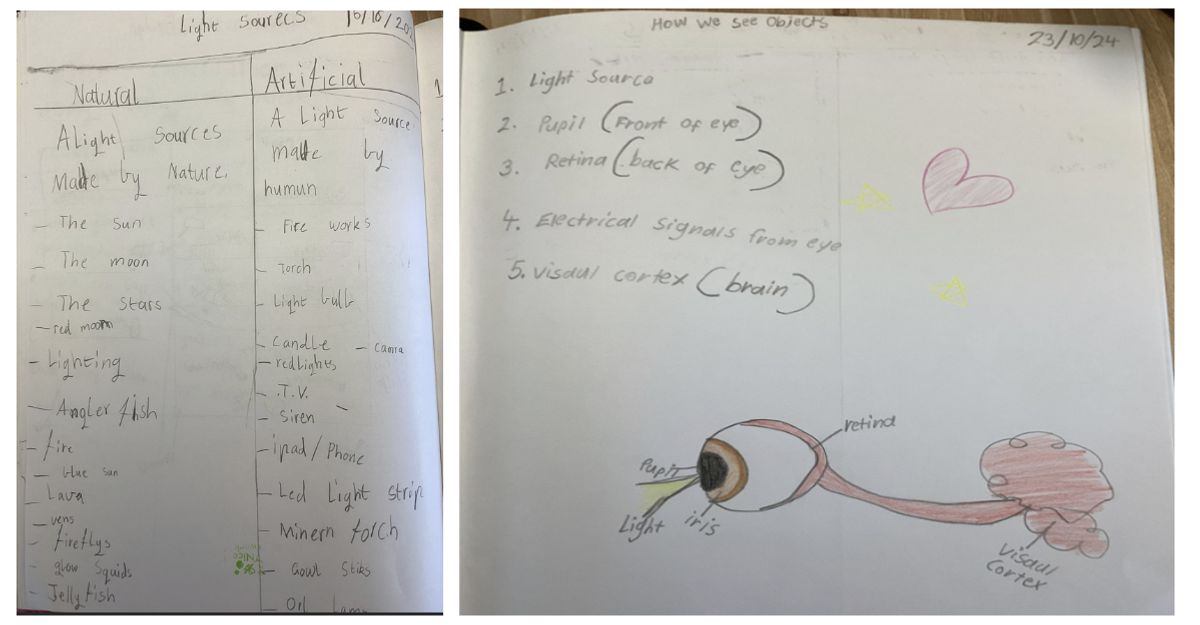

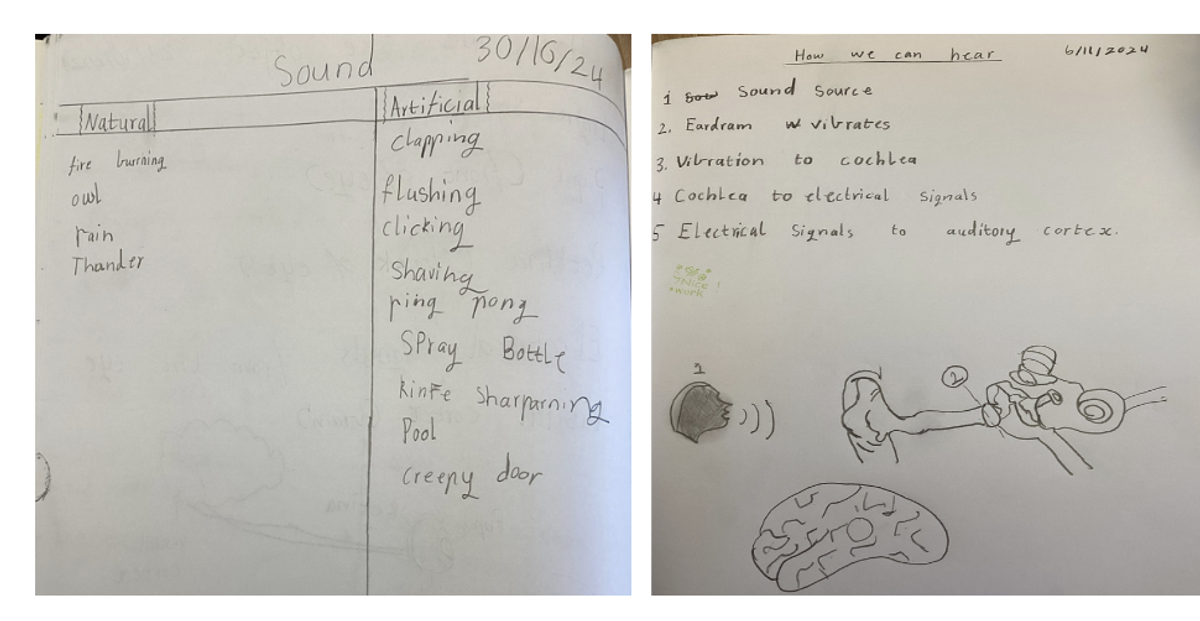

We learnt that heat sources can be sorted into natural or artificial heat sources. We also learnt that heat can transfer from three types - conduction, convection and radiation. Students were challenged to identify these three types of heat transfer in their daily lives. For example, conduction happens when the pan directly touches the flame.
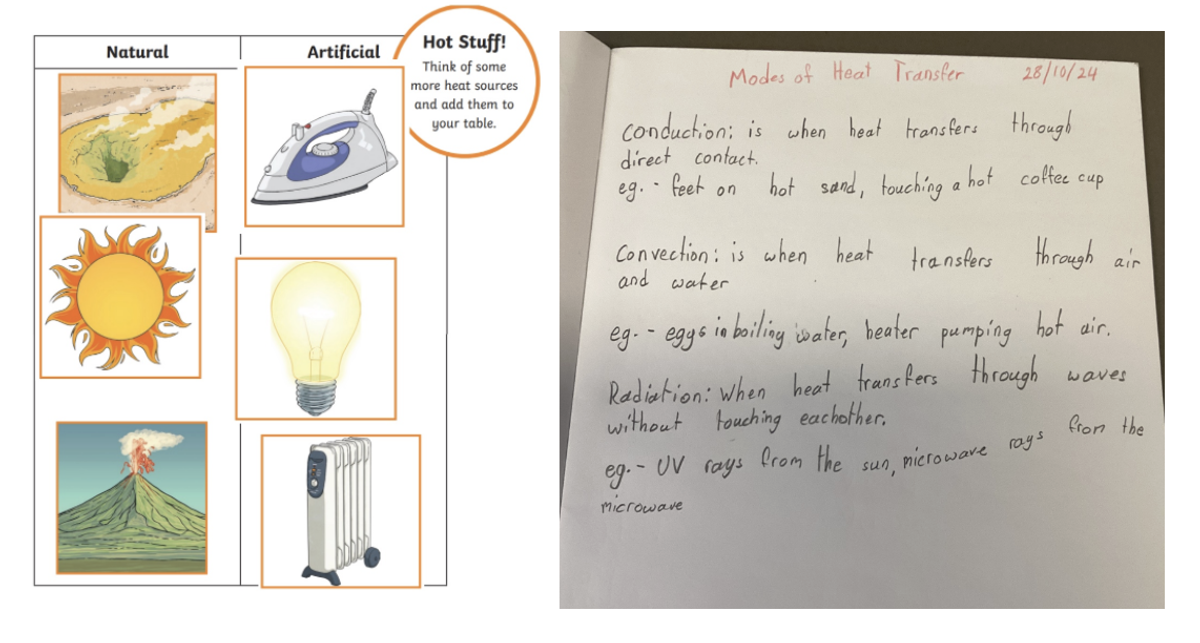

We learnt that objects move due to contact or non-contact forces. We explored friction by conducting a mini experiment using raw rice grains in a glass jar and a pencil. We also explored air resistance (drag) to explain how aeroplanes fly efficiently in the sky. Exploring magnetism as an example of non-contact forces, students were challenged to explain why magnets with the same pole repel and why magnets with different poles attract. We engaged in a variety of discussions, gestures and drawings to grasp the new concepts before recording our learning using written scientific language in our Science journals.
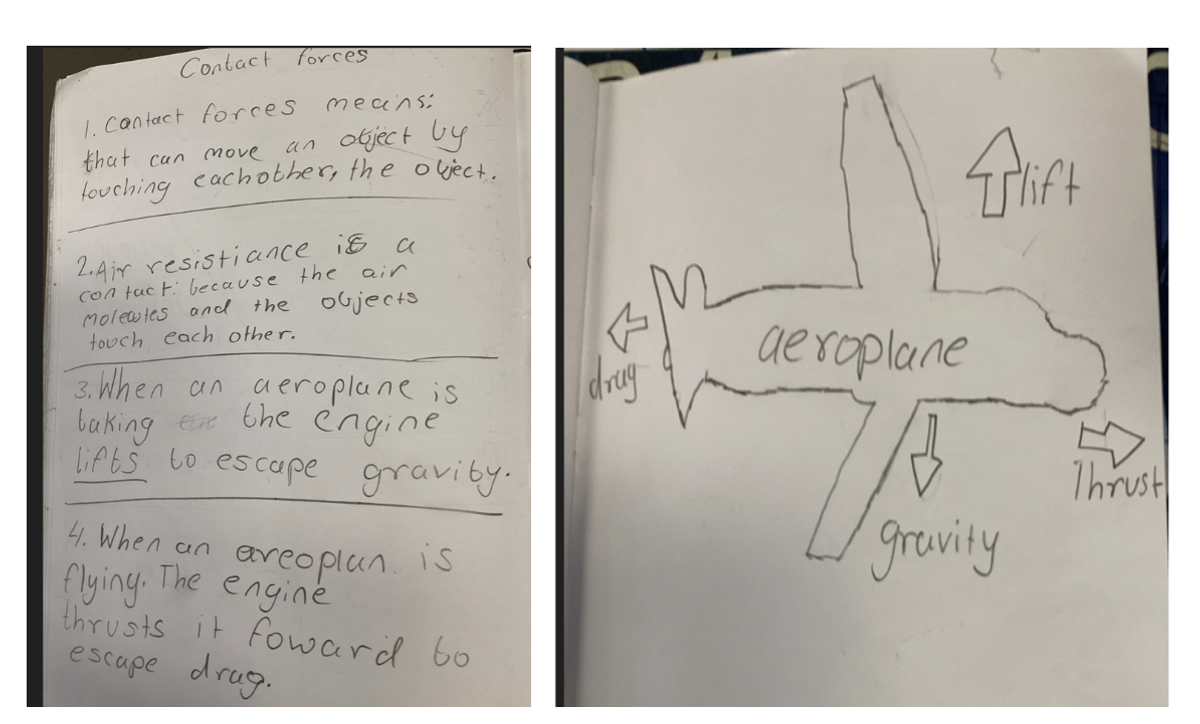

We learnt that when a beam of light hits a medium like glass or air, the waves that make up the light slows down as it passes the medium. This slowing down of light is what causes the colours that make up light to split and bend when it enters the medium at an angle. This phenomenon is called refraction. We also learnt that light travels differently through a transparent, translucent and opaque medium. Students conducted an experiment on Seesaw and were challenged to explain why certain objects in their daily lives are made of transparent, translucent and opaque objects. For example, a window is transparent to let light pass through whilst the opaque walls provide privacy. Finally, we learnt that reflections can be regular (specular) or irregular (diffuse) depending on the medium the light is bouncing off. We identified a range of examples of the two types of reflections in our lives. Students were challenged to explore multiple (infinite) reflections which occur when an object is placed in front of two or more mirrors to create an ‘illusion’ effect, such as in a mirror maze.
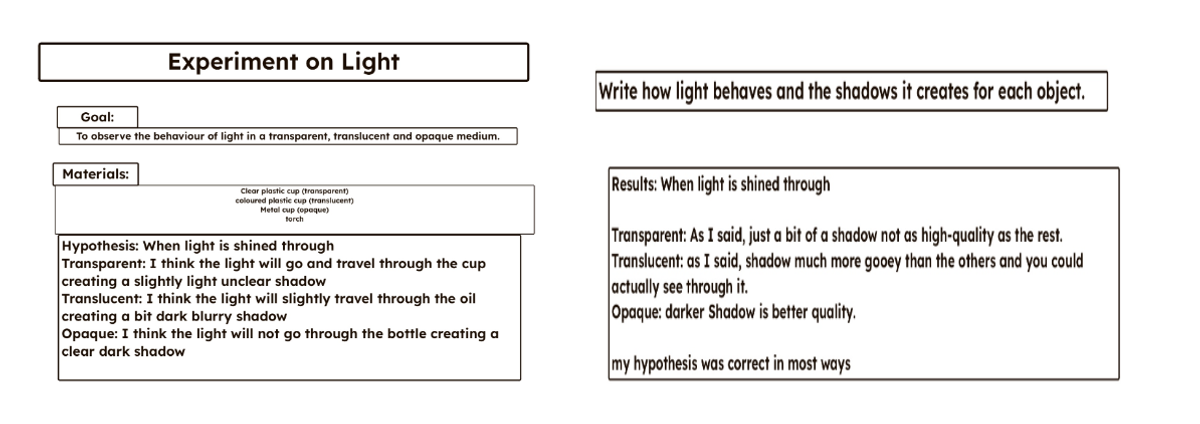

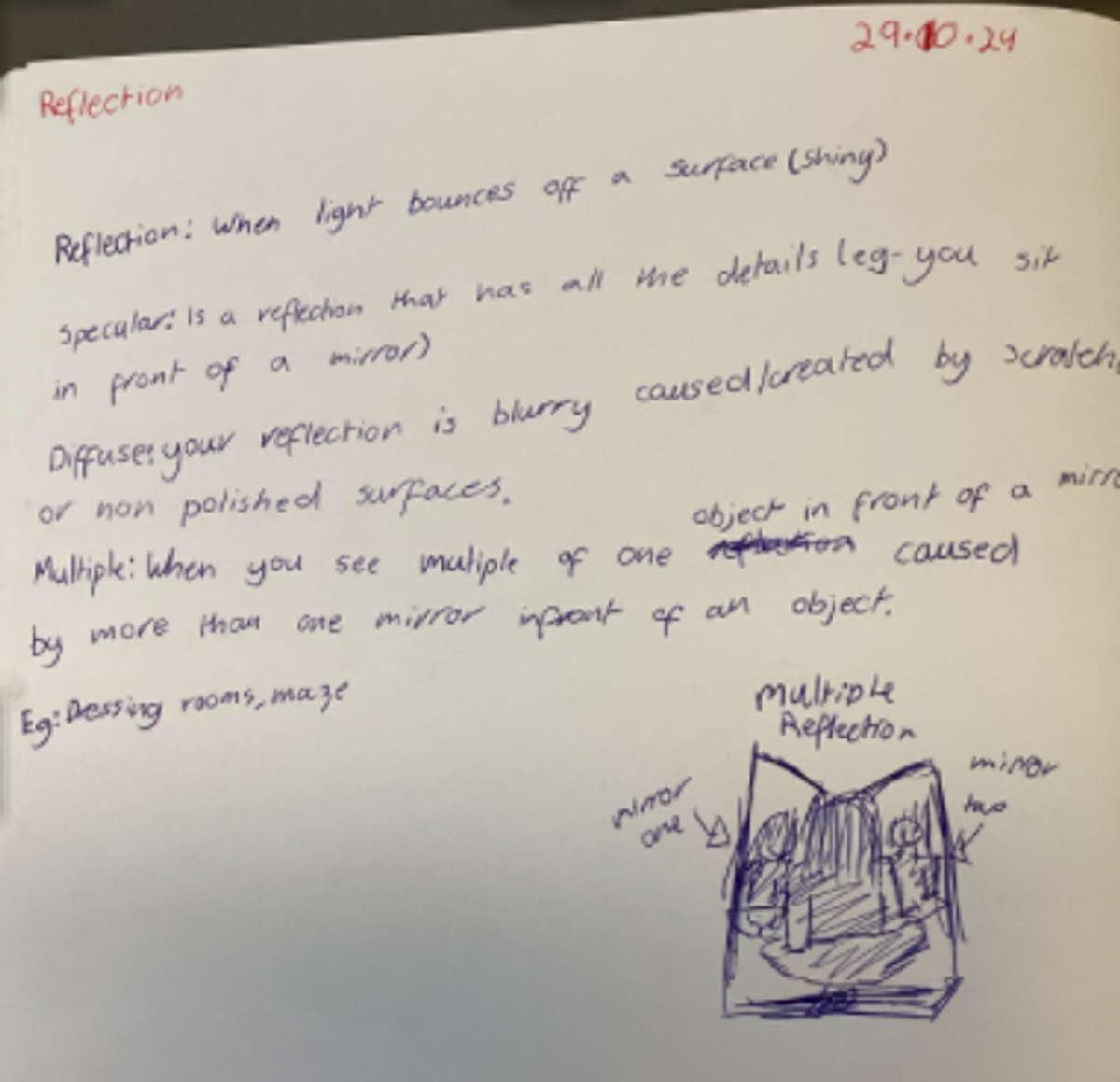

Following our renewable and non-renewable energy unit, we explored four types of energy - mechanical/motion, gravitational, electrical and radiant. We defined the four types of energy, how they work and their uses in our daily lives. For example, electrical energy requires a circuit, usually from good conductors such as metal wires, for the electrons to flow quickly from a battery to light up a light bulb. Students were challenged to explore radiant energy, including discussions about why forms of radiant energy with shorter wavelengths, such as x-rays and gamma rays, are more dangerous than forms of radiant energy with longer wavelengths, such as radio and microwaves.
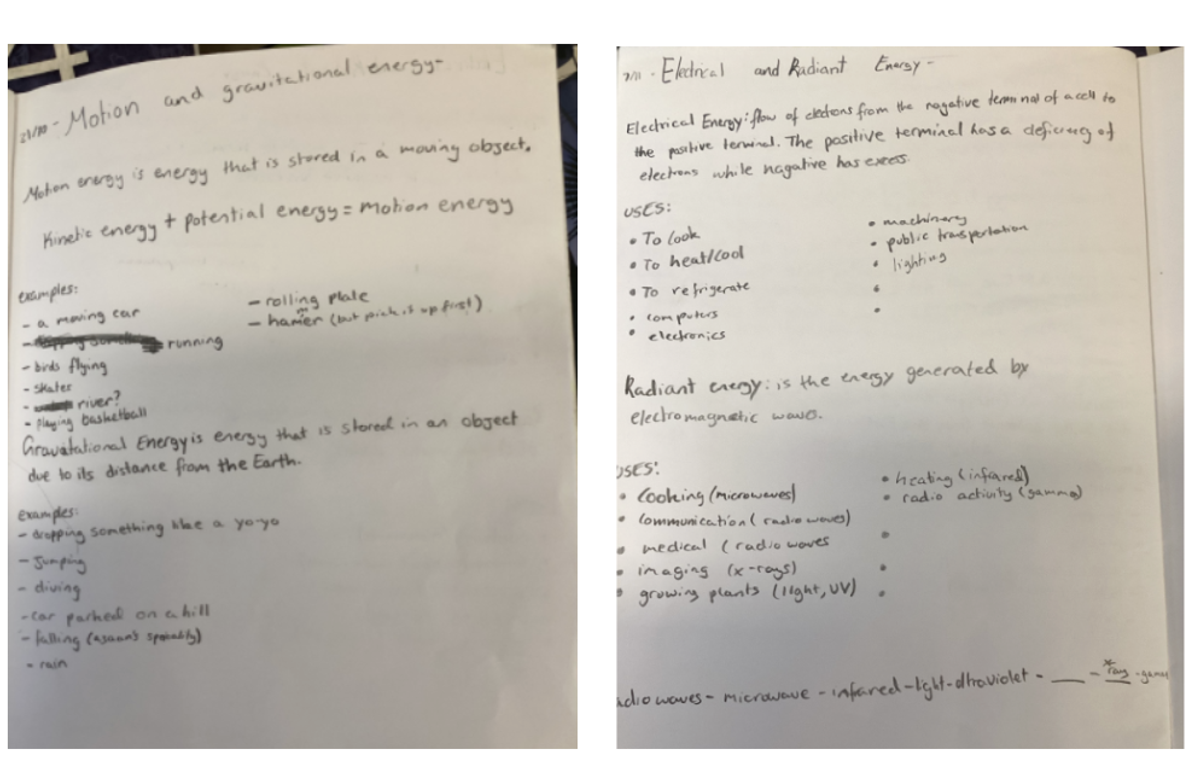

Lots of love from,
Mrs Kini and Miss N